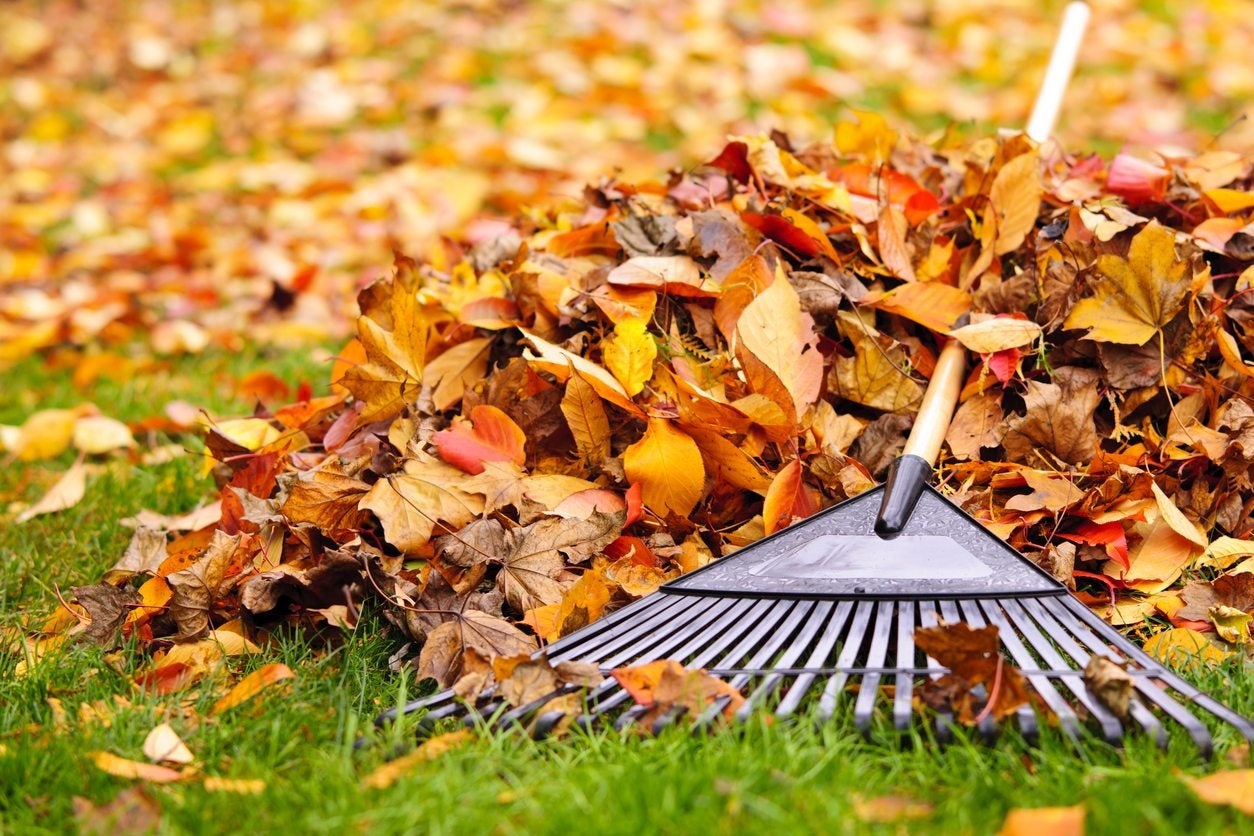
Garden tools, like other tools, help us do tasks more easily. For instance, if your landscape abounds with deciduous trees, you need a leaf rake, not to be confused with a garden rake. There are different types of leaf rakes available, each with a unique specialization. Choosing the correct leaf rake depends on a number of factors.
What is a Leaf Rake Used for?
A leaf rake is a lightweight rake that is shaped like a fan with flat, springy tines radiating outward. This type of rake is designed to be light enough to glide over grass without damaging it and digging into the turf. Leaf rakes are also sometimes referred to as lawn rakes. There are steel, polypropylene or bamboo types of leaf rakes available. The beauty of bamboo or polypropylene leaf rakes over steel rakes is that they are predominantly rust free; the wire holding the tines together may rust if not stored properly or oiled, however. The difference between a leaf rake and a garden rake is function as well as form. Garden rakes are sturdier and heavier than leaf rakes. Their job is working with soil, loosening it, leveling it, etc. Soil is significantly heavier than dry leaves or grass, so a garden rake is built of steel with short, sturdy tines that point downward. These tines are solid and lack the springy quality of leaf rakes.
When to Use a Leaf Rake
There are two basic leaf rake uses. One use for a leaf rake is probably self-evident – to rake leaves. The other major use for a leaf rake is to rake out dead grass. This is especially helpful after winter. Wait until the grass begins to green up so you can see the dead patches and then rake up the dead turf. When you use a leaf rake, use a sweeping motion, almost like you are using a broom. The object here isn’t to de-thatch the lawn, it’s just to expose the area to air so nutrients and water can penetrate the turf.
Choosing a Leaf Rake
As mentioned, leaf rakes may be made out of plastic, steel or bamboo. Plastic and bamboo not only won’t rust, but they are lighter and usually less expensive than metal rakes. The downside here is that they are also prone to breaking more easily than metal. Metal rakes are ideal for moving larger piles of leaves or thatch, especially if you are trying to rake when they are still wet and heavy. Also, there are metal rakes with adjustable tines. Again, they cost a bit more but take more abuse than plastic or bamboo. Metal rakes should be stored in a dry shed or garage and coated with oil so they don’t rust. Choose a rake that fits your height. Try several on for size. Trust me, if you get a rake that is too short and you have to stoop, your aching back will make you return it in a hurry. Some rakes come with adjustable handles, perfect to get the kids in on the leaf raking.
Sign up for the Gardening Know How newsletter today and receive a free copy of our e-book "How to Grow Delicious Tomatoes".

Amy Grant has been gardening for 30 years and writing for 15. A professional chef and caterer, Amy's area of expertise is culinary gardening.
